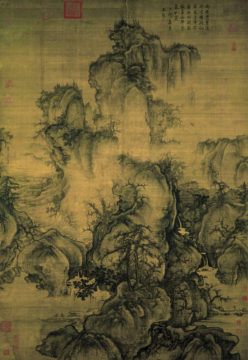by Leanne Ogasawara

1.
Like clockwork, every year around the spring equinox, the ducks and egrets would return to the river in Tochigi. And sprigs of green grass would start sprouting in our lawn. This was when people started taking to the hills to pick mountain vegetables, herbs, and other wild foods. My son loved looking for ferns and fiddleheads. In Japan, this meant warabi (bracken fern), zenmai (osmund or cinnamon fern) and kogomi (ostrich fern). We enjoyed going “baby fern hunting.” The delicacies could be found along a trail a bike-ride away from our house. Like little coiled springs, the fiddleheads seemed waiting for just the right moment to unfurl.
Old like dragonflies, ferns once covered prehistoric forests. My son and I loved imagining ourselves wandering in a never-ending fern forest as gigantic dinosaurs soared in the skies above our heads. The mist-covered hill near our house, just waking up from winter was the home of fiddleheads, lilies and dogtooth violets. And there was an ancient shrine standing guard at the summit.
“Mountains smiling in early spring” –Borrowed like so many things from China, the poetic trope was made famous in Japan by the Northern Song painter Guo Xi, whose poem about mountains smiling and laughing in spring appeared in an poetry anthology in Japanese known as 漢詩集 「臥遊録」 Chinese Poetry Anthology Dream Journey Jottings:
春山淡治而如笑
夏山蒼翠而如滴
秋山明浄而如粧
冬山惨淡而如眠
“Mountains smiling in early spring” was an image much appreciated in Japanese haiku. After what must have felt like an unendingly long period of cold and depressing “mountains sleeping,” the mountains in March would seem to almost “spring” to life again.
笑= can mean smiling and/or laughing: oh, how this has tormented translators of Japanese and Chinese… Read more »
